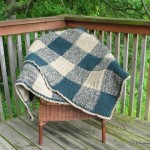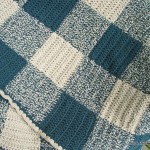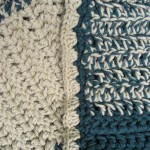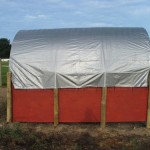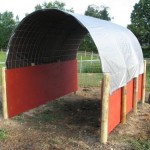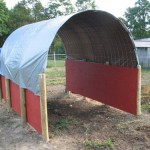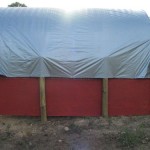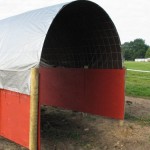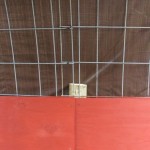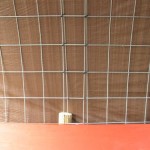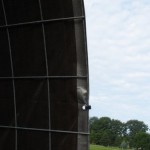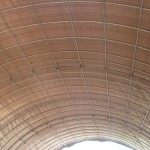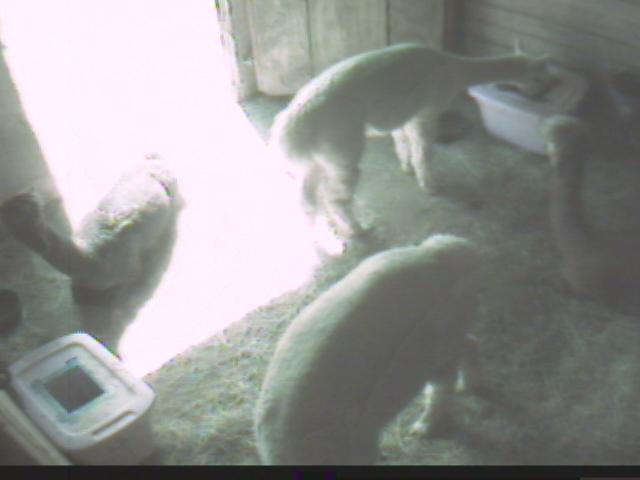Welcome back Fiber Arts Friday visitors!
I finished my mom’s blanket! It’s already been washed, and is wrapped and waiting for later this month so I can give it to her. Too bad it’s the start of summer, she might not get to enjoy it until much later since it’s such a thick blanket.
A friend of mine really liked the blanket and asked for one so that means I actually have to duplicate it! Yikes. So, I wrote down the pattern for myself which means I have a pattern to share with all of you!
Country Flannel Blanket Pattern (PDF) – Printer friendly
This blanket is made in strips each strip containing (10) 7×7 inch squares and 6 strips total. Finished blanket size will be 6×4 feet. The strips are made by using 2 strands of yarn at once. It is a very thick and heavy blanket (6lbs) and it works up very fast. I crochet slowly and the blanket only took me 15 working hours to finish to give you an idea of how fast it goes.
Materials:
(3) Caron One Pound Yarn – Taupe
(3) Caron One Pound Yarn – Forest Green
Size ‘N’ Hook
Size ‘K’ Hook
Darning needle
Strips 1, 3, & 5
Square 1
Row 1 – Using 2 strands of forest green chain a row of 18 with the N hook
Row 2 – DC in 2nd stitch from hook, DC in each stitch to the end, CH 2 and turn (16) Length should measure 7” add/dec stitches if needed
Row 3-? – DC in each stitch to the end of the row, CH 2 and turn (End your square when it measures 7×7 inches)
Last row of square – do not CH2 and cut a 5″ tail off one of your green yarn
(Note: with the exception of the start of the 1st row of the strip, all of your tails will end on the same side of the strip)
Square 2
Row 1 – tie in taupe yarn leave a tail to darn in later – CH2 – DC in each stitch to end of row, CH2 and turn
Row 2-? – DC in each stitch to the end of the row, CH 2 and turn (End your square when it measures 7×7 inches)
Last row of square – do not CH2 and cut a 5″ tail off one of your taupe yarn
Square 3-10
Repeat Square 2 alternating with 2 green and 1 green 1 taupe until all 10 squares are complete
Strips 2, 4, & 6
Follow same instructions above but alternate using 2 taupe and 1 taupe and one green
Darn all your tails into your work and whip stitch the strips together. Take care to line up the squares and check as you go. I had the misfortune of finishing a row and then held it up just miss an alignment half way through the row! Errrr…
Boarder:
Still using the ‘N’ hook but using only 1 strand of green yarn SC all the way around the blanket 2x, Add a SC in each corner so they remain square
Switch to the ‘K’ hook and 1 strand of taupe yarn
Tie your yarn in, Skip a stitch and DC 4x in the next stitch, skip a stitch and repeat 4 DC all the way around the blanket. This boarder is meant to add a very slight ruffle to the edge and soften up the look of all those squares.
